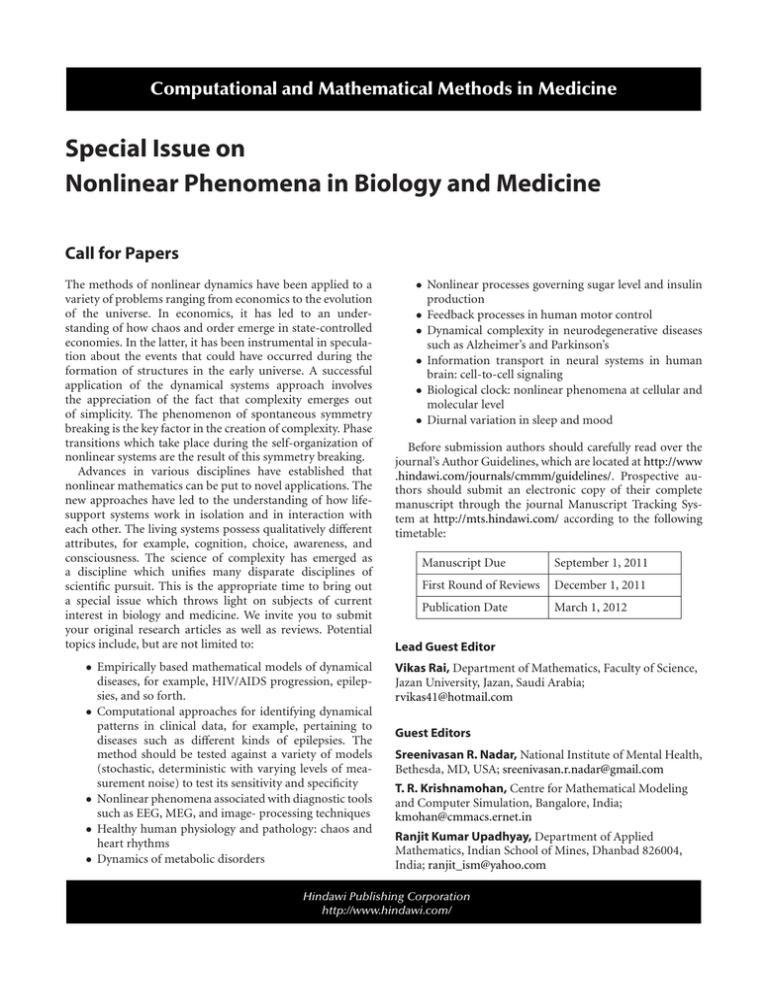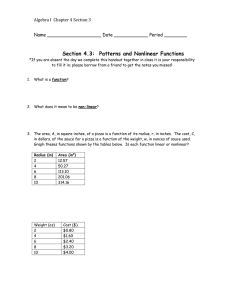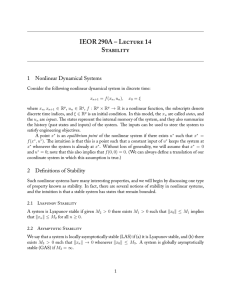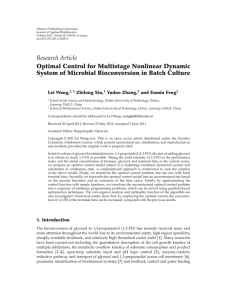Special Issue on Nonlinear Phenomena in Biology and Medicine Call for Papers
advertisement

Computational and Mathematical Methods in Medicine Special Issue on Nonlinear Phenomena in Biology and Medicine Call for Papers The methods of nonlinear dynamics have been applied to a variety of problems ranging from economics to the evolution of the universe. In economics, it has led to an understanding of how chaos and order emerge in state-controlled economies. In the latter, it has been instrumental in speculation about the events that could have occurred during the formation of structures in the early universe. A successful application of the dynamical systems approach involves the appreciation of the fact that complexity emerges out of simplicity. The phenomenon of spontaneous symmetry breaking is the key factor in the creation of complexity. Phase transitions which take place during the self-organization of nonlinear systems are the result of this symmetry breaking. Advances in various disciplines have established that nonlinear mathematics can be put to novel applications. The new approaches have led to the understanding of how lifesupport systems work in isolation and in interaction with each other. The living systems possess qualitatively different attributes, for example, cognition, choice, awareness, and consciousness. The science of complexity has emerged as a discipline which unifies many disparate disciplines of scientific pursuit. This is the appropriate time to bring out a special issue which throws light on subjects of current interest in biology and medicine. We invite you to submit your original research articles as well as reviews. Potential topics include, but are not limited to: • Empirically based mathematical models of dynamical • • • • diseases, for example, HIV/AIDS progression, epilepsies, and so forth. Computational approaches for identifying dynamical patterns in clinical data, for example, pertaining to diseases such as different kinds of epilepsies. The method should be tested against a variety of models (stochastic, deterministic with varying levels of measurement noise) to test its sensitivity and specificity Nonlinear phenomena associated with diagnostic tools such as EEG, MEG, and image- processing techniques Healthy human physiology and pathology: chaos and heart rhythms Dynamics of metabolic disorders • Nonlinear processes governing sugar level and insulin production • Feedback processes in human motor control • Dynamical complexity in neurodegenerative diseases such as Alzheimer’s and Parkinson’s • Information transport in neural systems in human brain: cell-to-cell signaling • Biological clock: nonlinear phenomena at cellular and molecular level • Diurnal variation in sleep and mood Before submission authors should carefully read over the journal’s Author Guidelines, which are located at http://www .hindawi.com/journals/cmmm/guidelines/. Prospective authors should submit an electronic copy of their complete manuscript through the journal Manuscript Tracking System at http://mts.hindawi.com/ according to the following timetable: Manuscript Due September 1, 2011 First Round of Reviews December 1, 2011 Publication Date March 1, 2012 Lead Guest Editor Vikas Rai, Department of Mathematics, Faculty of Science, Jazan University, Jazan, Saudi Arabia; rvikas41@hotmail.com Guest Editors Sreenivasan R. Nadar, National Institute of Mental Health, Bethesda, MD, USA; sreenivasan.r.nadar@gmail.com T. R. Krishnamohan, Centre for Mathematical Modeling and Computer Simulation, Bangalore, India; kmohan@cmmacs.ernet.in Ranjit Kumar Upadhyay, Department of Applied Mathematics, Indian School of Mines, Dhanbad 826004, India; ranjit_ism@yahoo.com Hindawi Publishing Corporation http://www.hindawi.com/











